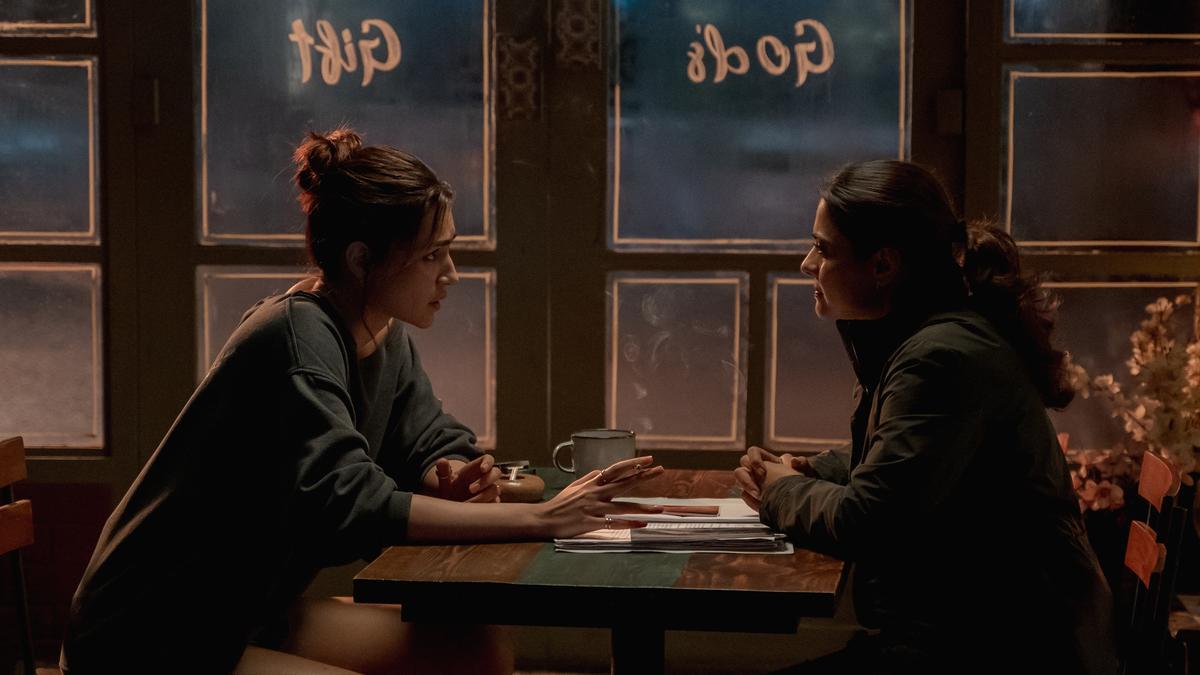
In the world of cinema, where narratives are often lauded for their ability to show more than they tell, recent trends on Over-The-Top (OTT) platforms have upended traditional storytelling philosophies. The latest entrant, “Do Patti,” now streaming exclusively on Netflix, exemplifies this shift. It’s yet another title that skips theatrical release in favor of a streaming platform, reducing the art of storytelling to a vessel for delivering a message, albeit one that’s vital but ultimately hollow without the depth of nuanced cinema.
The film finds its essence as a spiritual counterpart to classics like “Seeta Aur Geeta” and newer entries like “Darlings,” combining elements of a police procedural, light-hearted chick-lit, and sobering themes of domestic abuse. Yet, it oscillates between these genres with a briskness that leaves viewers yearning for more cohesion. Crafted by writer Kanika Dhillon, the dialogues bristle with potential and wit, but they seem weighed down by a screenplay that lacks seamless connectivity, failing to forge the intended empathetic bonds with its characters.
Set against the picturesque backdrop of Uttarakhand’s mist-clad hills, the narrative primarily revolves around two sisters, Saumya and Shailee, both portrayed by the versatile Kriti Sanon. Their lives are marked by a tumultuous past, with each sister embodying starkly different personalities. Saumya, docile and introverted, contrasts sharply with the more flamboyant and self-assured Shailee. Their contrasting dispositions become entangled in a complex web when they both fall for the same man, Dhruv Sood, played by Shaheer Sheikh.
Dhruv, the privileged offspring of a Haryana politician, is entangled in a world where anger issues fester beneath his otherwise charming exterior. This façade masks an insecure, patriarchal mindset that sees the sisters as trophies to flaunt. Inexplicably caught in the crossfire of affection and power dynamics, their narrative draws parallels to larger societal issues, aiming to shed light on the pervasive violence women endure.
However, the film falters in transforming these poignant societal observations into a compelling narrative.
. Director Shashanka Chaturvedi, alongside Kanika Dhillon, crafts a series of moments that graze profundity but ultimately flounder in patchwork storytelling. Despite this, Mart Ratassepp’s cinematography captures Uttarakhand’s scenic vistas with a clarity that entices lovers of visual splendor and adventure. Yet, for those delving into the intricate psychological landscapes of the characters, the cinematographic journey may feel like an unfinished expedition.
Kriti Sanon, tasked with the challenging dual role, brings a level of finesse that delineates her characters’ dualities. However, the novelty of this device loses its impact over time, signaling narrative revelations from afar. Sanon’s portrayal remains a testament to her ability to walk the fine line between submission and rebellion, but the film does not always match her prowess. Opposite her, Shaheer Sheikh shoulders the responsibility of portraying Dhruv, yet his performance occasionally falters, leaving viewers puzzled by his character’s underlying motivations.
Kajol, a stalwart of Indian cinema, joins the narrative as an unwavering police officer confronting a multitude of life’s challenges. Echoing the roles of her contemporaries such as Raveena Tandon and Karishma Kapoor, Kajol infuses her character with an authenticity that transcends the script’s limitations. Her natural spontaneity illuminates the character; however, moments tethered by uneven writing and the constraints of her role underscore the potential misses in communication and clarity.
While “Do Patti” aspires to spotlight critical issues such as domestic abuse and female agency, its execution might evoke mixed reactions. As it weaves through a mélange of genres, the film mirrors its intent to prioritize the spirit of law over the letter of law, yet in doing so, it straddles inconsistencies that may impede its cinematic strides.
Ultimately, “Do Patti” stands as a testament to Netflix’s burgeoning roster of content – a film that resonates with a meaningful message but is left stranded on the precipice of cinematic excellence due to its narrative shortcomings. As audiences engage with this complex tale, it remains to be seen whether the allure of its themes can outweigh the tangled storytelling path it undertakes.












